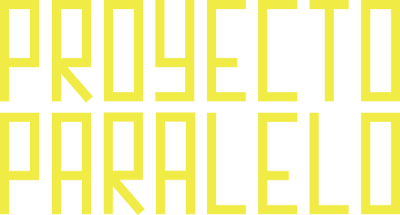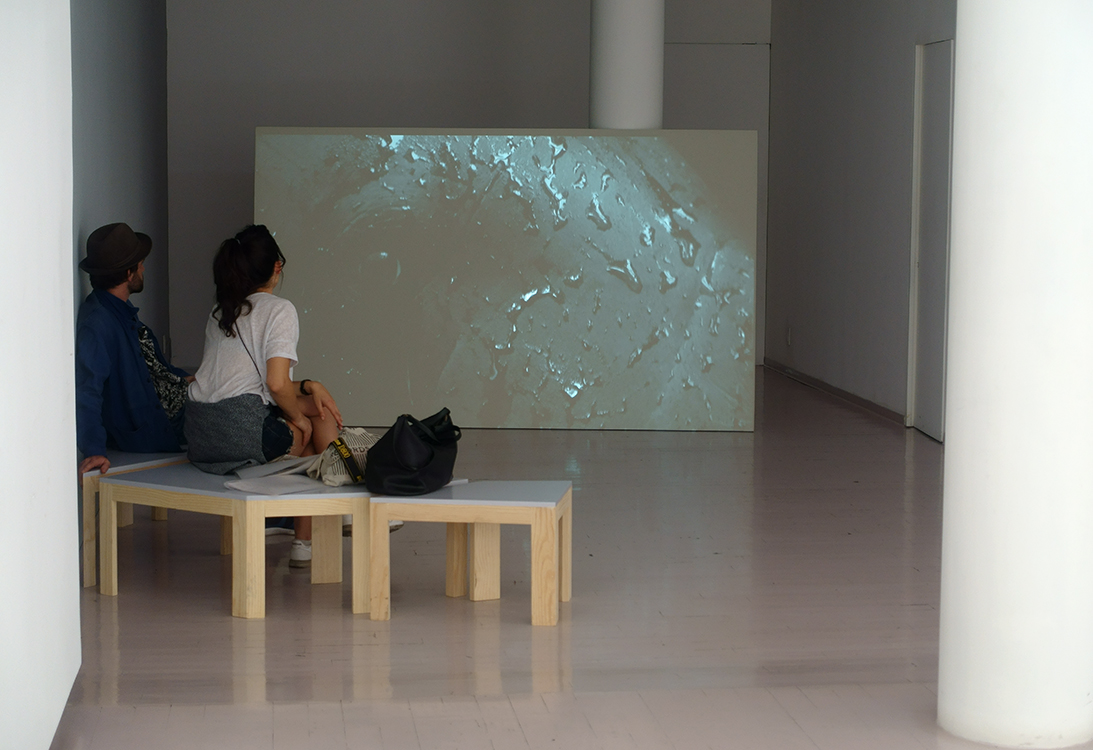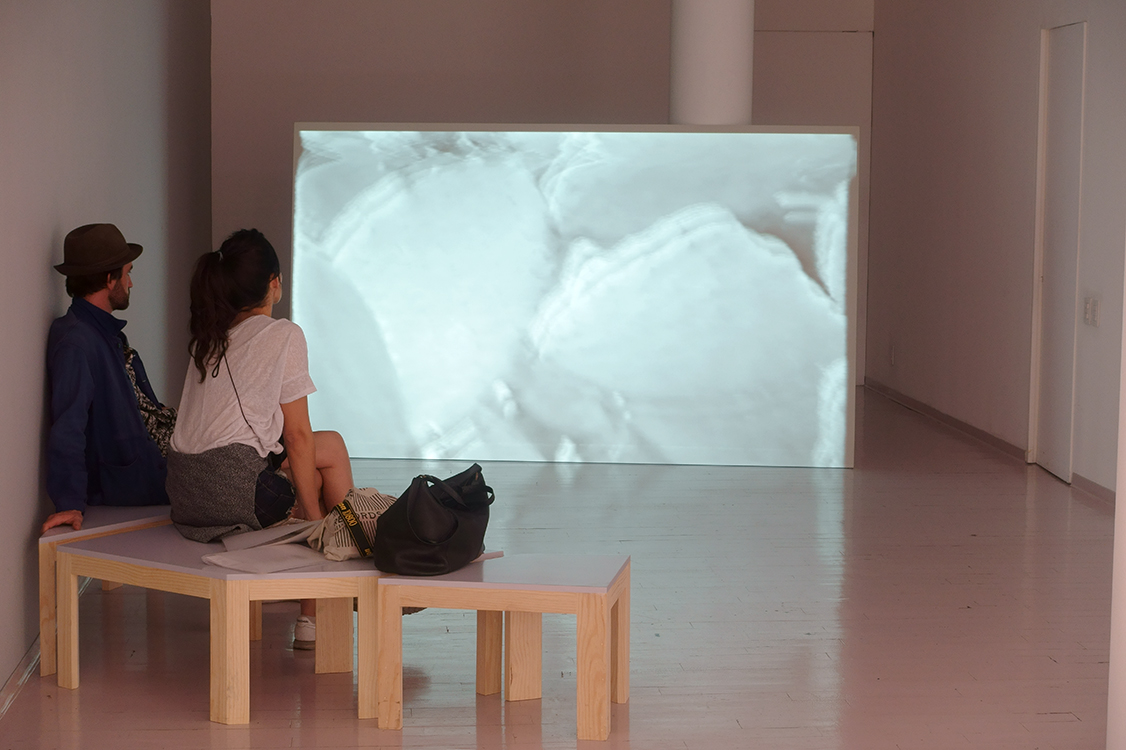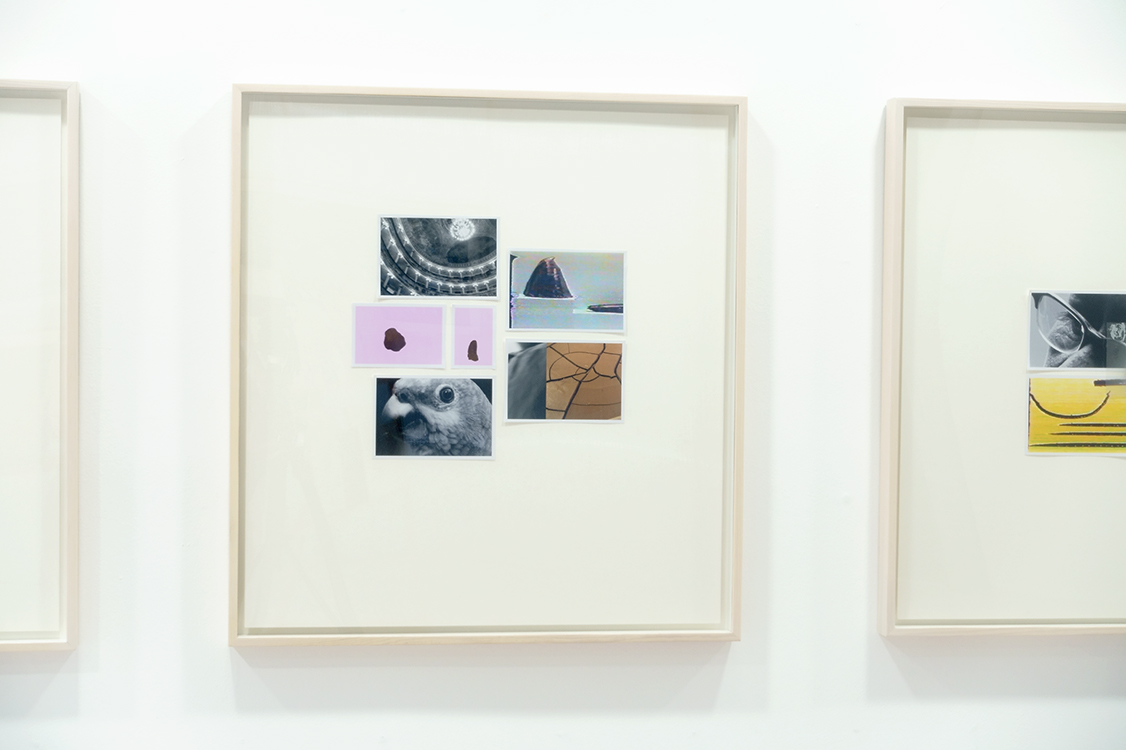*for english scroll down
MELANIE SMITH
maps, mud y Mundo(s)
Inauguración: Martes 3 de febrero de 2015
Iniciamos el año presentando la primera exposición individual de Melanie Smith en Proyecto Paralelo. La muestra, que inaugura además la colaboración con la artista, ha sido producida expresamente para la galería y abstrae algunos de los lenguajes e intereses sobre los que Smith ha estado trabajando en los últimos años. Como es habitual en su práctica reciente, el eje de la exposición se encuentra en una pieza de video, en esta ocasión en blanco y negro, en la que Smith reconvierte un variado compendio de imágenes en situaciones puras de forma, color y textura. Si hay una narrativa esta tiene que ver con la manera en que sucede la conversión de aquello que simplemente percibimos en información cultural compleja. A su vez, el ejercicio que propone Smith, nos obliga a repensar la manera en que la cultura condiciona nuestra percepción y mediatiza la relación de deseo y fruición que se establece entre el espectador y la imagen, transformando el orden ontológico en el que tendemos a percibir e interpretar la información visual. Los cuatro registros en los que se mueve el video -el arqueológico, el paleontológico, el erótico y el que tiene que ver con algo más cercano a la idea de origen- se traslapan unos a otros poniendo en evidencia la complejidad inherente a la subjetividad desde la que nos enfrentamos a la obra.
Esta lectura se da desde luego en el contenido del video mismo, pero también en el desplazamiento que Smith propone en su presentación: la pantalla ha sido transformada en una especie de cuadro que a su vez es la metáfora de la ventana hacia el mundo. Los cuadros que complementan la exposición han dejado los muros y funcionan a su vez como un conjunto de pantallas en las que las imágenes se yuxtaponen como palimpsestos y nos ofrecen una visión simultánea e inmediata en contraste con la temporalidad implícita en la imagen en movimiento. Así, ambos lenguajes se sobreponen y se confunden demostrando que, independientemente del soporte en el que se presente, la imagen pide nuestra atención vibrando con vida propia. Smith nos confronta con la manera en que las imágenes funcionan como superficies que se van adueñando del espacio: el video es la matriz desde la que se desprenden objetos y collages que junto con las pinturas se van desplegando en una especie de elipse que va recogiendo información y rastros de cada iteración de la imagen.
La muestra en conjunto se presenta como un posible argumento frente al reto que propone W.J.T. Mitchell cuando pregunta ¿qué quieren las imágenes?: las que nos propone Melanie Smith aparecen como entes animados por el deseo, por necesidades, apetitos e impulsos propios que buscan provocarnos a entrar en ese movimiento elíptico sin fin.
Melanie Smith (Poole, Reino Unido, 1965). Obtuvo la licenciatura en Bellas Artes en la Universidad de Reading. Su producción se ha definido por cierta relectura de las categorías formales y estéticas de los movimientos de la vanguardia y la post-vanguardia problematizadas en el lugar y el horizonte de las heterotopías. En piezas anteriores, ha abordado la propia Ciudad de México, registrando sus multitudes, violencia, banalidad y naturaleza clandestina y, a la vez, la inherente descomposición de la ciudad. La obra más destacada de esta serie es el video Ciudad espiral (2002). En otra de sus obras, expande las nociones de lugar y no-lugar al documentar el pequeño pueblo de Parres, en las afueras de la ciudad. Produjo una trilogía filmada en 35 mm y una serie de pinturas e instalaciones que renegocian la idea modernista de lo monocromático. Su trabajo actual se vincula con una visión crítica de la modernidad en Latinoamérica: las relaciones entre la precariedad, la vida y las formas de violencia de la sociedad industrial contemporánea. En piezas anteriores, ha trabajado sobre las implicaciones estético-políticas de las multitudes, la violencia y las formas aberrantes de los alrededores de la contemporaneidad. Vídeos como Estadio Azteca - Proeza maleable, Xilitla (2010), Bulto (2011) y Elevador (2012) son muestra de ello. Su trabajo ha sido expuesto en numerosas instituciones nacionales e internacionales: PS1, Nueva York; MOMA, Nueva York; UCLA Hammer Museum, Los Ángeles; ICA, Boston; Tate Liverpool; Tate Modern, Londres; South London Gallery, Londres; CAMH, Houston; Milton Keynes Gallery, Milton Keynes; CCA, Vilnius; Museo de Arte de Lima; Museo Tamayo, Museo Universitario Arte Contemporáneo (MUAC) y Museo Experimental El Eco, ciudad de México; Museo de Monterrey, entre otros. En 2011 fue representante del pabellón de México en la 54 Bienal de Venecia. Del 2012 al 2014 ha tenido exposiciones individuales en Villa Merkel, Stuttgart; CAMH, Houston; CCA, Vilnius; Museum Boijmans van Beuningen, Rotterdam. Es miembro del Sistema Nacional de Creadores del FONCA, México.
ENGLISH VERSION
MELANIE SMITH
maps, mud y Mundo(s)
Opening: Tuesday February 3, 2015
We are very pleased to open the year with the first solo exhibition byMelanie Smith at Proyecto Paralelo. The show, that also inaugurates our collaboration with the artist, has been specifically produced for the space and addresses some of the topics and languages that Smith has been working on recently. Much as it does in her latest installations, the show revolves around a video-work, in this case in black and white, in which Smith turns a varied array of images into form, color and texture situations. If there is a narrative at all, it has to do with the way in which we transform our perceptions into complex cultural information. At the same time, the exercise proposed by Smith, forces us to rethink the way in which culture conditions our perception and mediates the relation of desire and fruition that is established between the image and the viewer, thus transforming the ontological order in which we tend to perceive and read visual information. The four registers throughout which the video travels -archeological, paleontological, erotic and primal- overlap one another bringing forth the complex forces that come into play whenever a subjectivity approaches the work.
This reading resides in the content of the video of course, but also in the displacement that Smith proposes in its installation: the screen has been transformed into a kind of painting that works at the same time as a window into the world. The actual paintings in the show have left the walls and now function as a group of screens in which images juxtapose like palimpsests offering us an immediate and simultaneous reading thatstands in contrast with the temporality implicit in the moving image. Thus, both languages step on one another proving that, no matter on what media it presents itself, the image demands our attention vibrating with a life of its own. Smith brings us face to face with the way in which images become surfaces that expand throughout space: the video-work is the matrix from which objects, collages and paintings radiate into an ellipse that gathers traces and scattered pieces of information form every iteration of the original image.
The show as a whole presents itself as a possible argument in response to W.J.T. Mitchell’s question: what do images want? The ones that Melanie Smith puts forward appear as entities animated by their own desires, needs, appetites and impulses and seek to provoke us into entering their endless elliptical motion.
Melanie Smith (Poole, England, 1965). Melanie Smith was born in Poole, England in 1965. She received her Bachelor of Arts from the University of Reading. Since 1989 she has lived and worked in Mexico City, an experience that has enormously influenced her works ever since. Her work has been characterized by a certain re-reading of the formal and aesthetic categories of avant-gardes and post-avant-garde movements, problematized at the sites and within the horizons of heterotopias. Her earlier pieces considered Mexico City itself, recording its multitudes, its violence, its banality, and its clandestine nature and at the same time its inherent decomposition. The most outstanding piece from this cycle is the video Spiral City (2002). In another of her works, she broadens the notions of place and non-place by documenting the small town of Parres on the outskirts of the city. She produced a trilogy of 35mm films and a series of paintings and installations that rework the modernist idea of the monochromatic. Her production is intimately related to a critical view of modernity in Latin America: the relationship between precocity, life and different forms of violence in contemporary industrial society. In earlier works she has analyzed the aesthetic and political implications of multitudes, violence and the abnormal forms surrounding the contemporary. Video-installations like Estadio Azteca - Proeza maleable, Xilitla (2010), Bulto (2011) and Elevador (2012) stem from this preoccupations. Her work has been exhibited at numerous institutions, both nationally and internationally including: PS1, New York; MOMA, New York; UCLA Hammer Museum, Los Angeles; ICA, Boston; Tate Liverpool; Tate Modern, London; South London Gallery, London; CAMH, Houston; Milton Keynes Gallery, Milton Keynes; CCA, Vilnius; Museo de Arte de Lima; Museo Tamayo, Museo Universitario Arte Contemporáneo (MUAC) and Museo Experimental El Eco, in Mexico City; Museo de Monterrey, among others. In 2011 she represented Mexico at the Mexican Pavillion in the 54 Venice Biennale. Between 2012 and 2014 she has shown individually in Villa Merkel, Stuttgart; CAMH, Houston and Museum Boijmans van Beuningen, Rotterdam. She is a member of the Sistema Nacional de Creadores, FONCA, Mexico.










